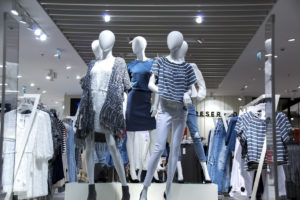 A unified leadership team for any business can be a catalyst for driving great results. When managers are all communicating with each other, sharing information and giving honest feedback an entire team benefits. Managers in those environments tend to see the big picture and can assist a peer in another department in their absence. As the staff members see this cohesion they understand that they can’t get one over on a supervisor or pit one against another. A management team that works well together can prevent situations where an employee may lie and not get caught or manipulate managers by playing what I call the “Mom vs. Dad” card.
A unified leadership team for any business can be a catalyst for driving great results. When managers are all communicating with each other, sharing information and giving honest feedback an entire team benefits. Managers in those environments tend to see the big picture and can assist a peer in another department in their absence. As the staff members see this cohesion they understand that they can’t get one over on a supervisor or pit one against another. A management team that works well together can prevent situations where an employee may lie and not get caught or manipulate managers by playing what I call the “Mom vs. Dad” card.
Working in a library, I see student workers trying to manipulate one or two “nice” staff members on a somewhat regular basis. The students may not see what they are doing as lying or being dishonest, they just know that there are certain supervisors who will probably say “Yes” to almost any request. The request may be to leave early or they want to call out of work for silly reasons. I had one employee who wanted to leave early because her pet fish was sick, even though she had spent one hour of her two-hour shift at work when she made the request. Now seriously, was she going to take this fish to a veterinarian? She chose the wrong supervisor to approach because the supervisor came to me and told me of the request and asked me for my opinion. While I gave the student the option to stay she was reminded that requests for leaving early impacted hiring decisions for the next semester. She stayed for her next hour.
In another situation, I had to have a conversation with a worker over her behavior with co-workers and supervisors. I made it clear the behavior would have to change and steps on how to improve. I did let her know I wanted her to be successful but I would not allow the behavior to continue if she was going to work for us. The employee came back later and attempted to give her resignation and turn in her equipment to one of our nicer staff members. The staff member was super sweet and was going to let it go with a, “I’m sorry to see you go.” The supervisor who was with me when I spoke with the employee walked in on the conversation and the mood changed. The employee tried to lie about the conversation and what was said to her. This supervisor cut off her excuses and reminded her what was really said during our talk. The employee left in a huff but the blame game was shut down. When the first supervisor was asked why she was just going to let the employee make her complaints and leave the supervisor said she liked to give people the benefit of the doubt. It’s no wonder why employees like to go to her to get what they want.
While we have a great team of supervisors, I do have problems with some who do not like to be the “bad guy”. A management team needs to share the burden of holding employees accountable for their actions. It is unfair to expect one or two supervisors to conduct discussions involving poor performance or behavior problems and/or administer corrective actions. These supervisors are the ones who appear to be the mean ones to the team members and acquire an undeserved reputation as being “unfair” or “harsh”. The best management teams are those in which everyone participates in the corrective action process. They document talks with employees and record them in some form of record keeping so when review time comes around those notes play a part in the scoring. These teams also have supervisors taking partners with each other making it harder for one person to be pitted against another.
There will always be those employees who try to get away with something whether it is not working as hard as their co-workers to outright lying to a supervisor. Those management teams that communicate amongst themselves and share the responsibility for administering correction or discipline when necessary will find it easier to identify and keep the best workers. Build a great store team by creating a cohesive management team that communicates with each other and shares the responsibilities of leadership.
 A Target or Walmart store can and are able to fight shoplifting in their stores every day of the year.
A Target or Walmart store can and are able to fight shoplifting in their stores every day of the year.
 After the holidays, you probably have a whole array of chores you must do to decide whether you had a good or bad year. The holidays are behind us, and if you seem eager to have new strategies to put in place, it is not uncommon, and you are not alone. New year resolutions are abundant during this time of year, and even though many of them are related to exercise, eating and health issues, yours can be directed completely to the business side of your life.
After the holidays, you probably have a whole array of chores you must do to decide whether you had a good or bad year. The holidays are behind us, and if you seem eager to have new strategies to put in place, it is not uncommon, and you are not alone. New year resolutions are abundant during this time of year, and even though many of them are related to exercise, eating and health issues, yours can be directed completely to the business side of your life. Accidents can be costly to businesses. In fact, according to the
Accidents can be costly to businesses. In fact, according to the
 Could it be that Santa Claus is not always a jolly, giving man? Oh yeah. Take a
Could it be that Santa Claus is not always a jolly, giving man? Oh yeah. Take a  The end of the holiday gift buying season ushers in the inevitable holiday gift return season. Clothes that don’t fit, ugly holiday sweaters no one really wanted, toys that were too old for a young child or too young for the older child all lead to returns, exchanges, and refunds. For those who have been in retail for any length of time, we know that many of these items will be returned without tags or a receipt and not even a gift receipt. It also means people will try to return merchandise to your store that was never even purchased there, despite what the customer in front of you says. This means it is prime time for those who engage in return fraud. There are so many people making returns that trying to separate legitimate refunds and exchanges from the fraudulent ones is difficult. There are steps you can take to minimize the number of fraudulent returns you accept.
The end of the holiday gift buying season ushers in the inevitable holiday gift return season. Clothes that don’t fit, ugly holiday sweaters no one really wanted, toys that were too old for a young child or too young for the older child all lead to returns, exchanges, and refunds. For those who have been in retail for any length of time, we know that many of these items will be returned without tags or a receipt and not even a gift receipt. It also means people will try to return merchandise to your store that was never even purchased there, despite what the customer in front of you says. This means it is prime time for those who engage in return fraud. There are so many people making returns that trying to separate legitimate refunds and exchanges from the fraudulent ones is difficult. There are steps you can take to minimize the number of fraudulent returns you accept. December is the month when retailers are focused on driving those end of the year sales. We push as much merchandise as possible out of the stockrooms to fill the floors. Empty salesfloor spaces should be “no-no’s” during this time of the year. We re-merchandise our fixtures to get gift ideas in front of our customers. We also take steps to increase impulse buys by filling check lanes with snacks, batteries, magazines, gift cards, etc. Managers should also be looking at last year sales information to plan schedules around peak times of the day in order to avoid long lines at the registers. While all of this is important it is just as important to start planning for your end of the year wrap up.
December is the month when retailers are focused on driving those end of the year sales. We push as much merchandise as possible out of the stockrooms to fill the floors. Empty salesfloor spaces should be “no-no’s” during this time of the year. We re-merchandise our fixtures to get gift ideas in front of our customers. We also take steps to increase impulse buys by filling check lanes with snacks, batteries, magazines, gift cards, etc. Managers should also be looking at last year sales information to plan schedules around peak times of the day in order to avoid long lines at the registers. While all of this is important it is just as important to start planning for your end of the year wrap up. A New Year is just around the corner and once again resolutions are going to be made and many of those will fall by the wayside. Why does that happen? Are goals too big to achieve? Sometimes we all start off with good intentions and we just get caught up in our normal routines and we can’t seem to focus on what it was we wanted to get done. There may be a manager out there who resolves that this is the year they will meet quarterly with each employee and discuss performance. They might do well the first quarter but then as the demands of the job take up more and more time something gives and it was the meetings. I recall one of my resolutions was to be more organized at work. I had a filing system, it was called my desktop and I knew where everything was at. I would make my resolution, create a filing system and you guessed it by the end of January I was back to my old habits. My intentions were good I just wouldn’t stay focused on it and made excuses.
A New Year is just around the corner and once again resolutions are going to be made and many of those will fall by the wayside. Why does that happen? Are goals too big to achieve? Sometimes we all start off with good intentions and we just get caught up in our normal routines and we can’t seem to focus on what it was we wanted to get done. There may be a manager out there who resolves that this is the year they will meet quarterly with each employee and discuss performance. They might do well the first quarter but then as the demands of the job take up more and more time something gives and it was the meetings. I recall one of my resolutions was to be more organized at work. I had a filing system, it was called my desktop and I knew where everything was at. I would make my resolution, create a filing system and you guessed it by the end of January I was back to my old habits. My intentions were good I just wouldn’t stay focused on it and made excuses.